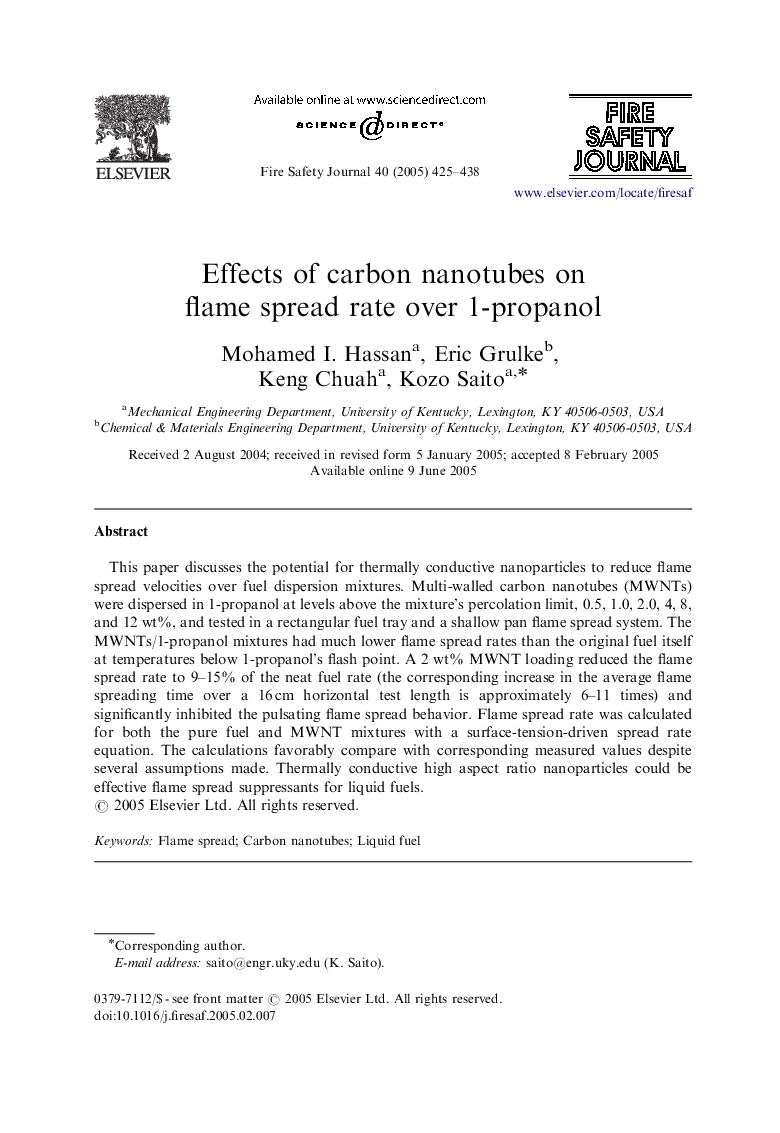| Article ID | Journal | Published Year | Pages | File Type |
|---|---|---|---|---|
| 10287876 | Fire Safety Journal | 2005 | 14 Pages |
Abstract
This paper discusses the potential for thermally conductive nanoparticles to reduce flame spread velocities over fuel dispersion mixtures. Multi-walled carbon nanotubes (MWNTs) were dispersed in 1-propanol at levels above the mixture's percolation limit, 0.5, 1.0, 2.0, 4, 8, and 12 wt%, and tested in a rectangular fuel tray and a shallow pan flame spread system. The MWNTs/1-propanol mixtures had much lower flame spread rates than the original fuel itself at temperatures below 1-propanol's flash point. A 2 wt% MWNT loading reduced the flame spread rate to 9-15% of the neat fuel rate (the corresponding increase in the average flame spreading time over a 16Â cm horizontal test length is approximately 6-11 times) and significantly inhibited the pulsating flame spread behavior. Flame spread rate was calculated for both the pure fuel and MWNT mixtures with a surface-tension-driven spread rate equation. The calculations favorably compare with corresponding measured values despite several assumptions made. Thermally conductive high aspect ratio nanoparticles could be effective flame spread suppressants for liquid fuels.
Related Topics
Physical Sciences and Engineering
Engineering
Civil and Structural Engineering
Authors
Mohamed I. Hassan, Eric Grulke, Keng Chuah, Kozo Saito,
